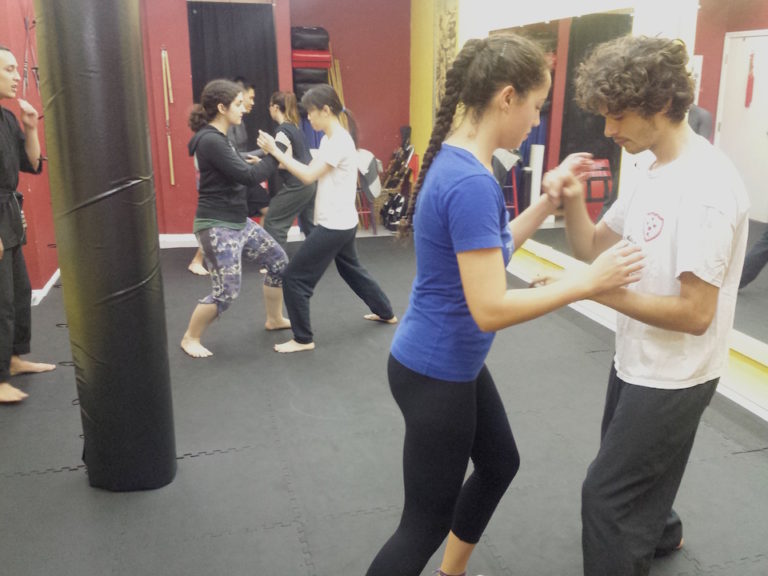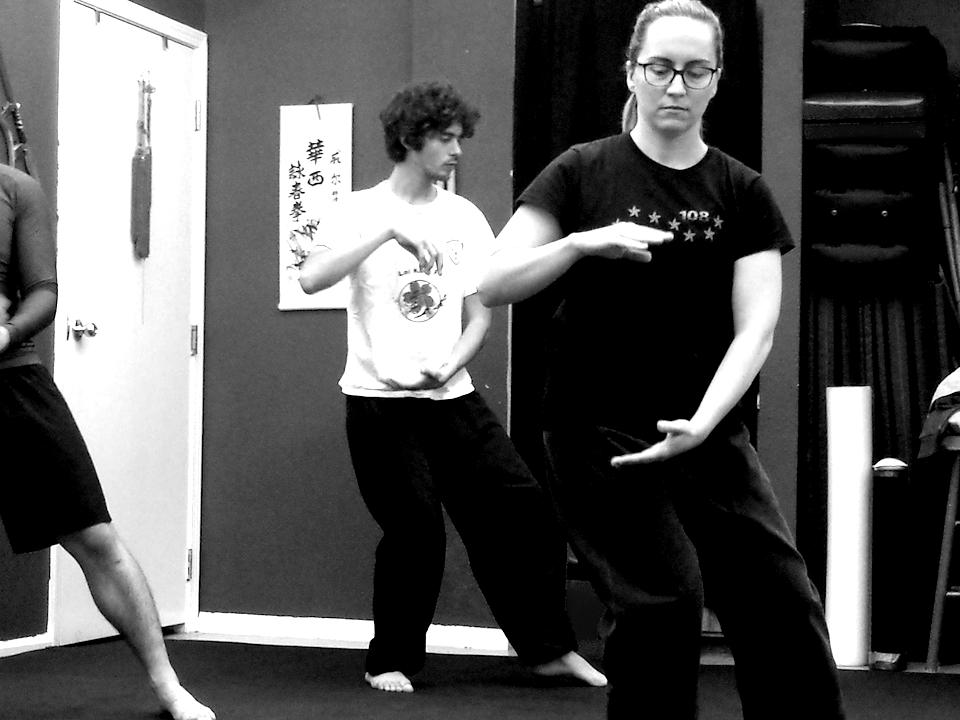24 Aug Tai Chi Push Hands | Littleton | Denver | Koa House
Tai Chi (Taiji), is an internal martial arts system. Here at 108 Kung Fu & Koa House, we stylistically train Zheng Man Qing Tai Chi, as taught from Benjamin Lo and his students in San Francisco, namely, Scott Meredith. Aside from form practice, we also heavily train Tai Chi Push Hands, or sometimes known as Sensing Hands. We have pushed with everyone from temples in China, parks in San Francisco, alleys in Oakland, schools in New York, and hundreds of people through our own doors at 108 Kung Fu in Chinatown. Push hands as a practice will teach you about yourself on the deepest of all levels. It will expose you, to you, and shape refinement in the softest of ways while eradicating tension physically, emotionally, spiritually, or mentally. You will also learn how to deal with humans on the deepest of all levels, whether aggressive, introverted, passive and everything else in between on a micro-moment basis. Not reactively at all, but predictively. Of course, as martial artists there is inherent value here – but this attribute based practice, will also carry into all realms of your life.
Before getting started, please see a few notes on our presentation:
Fixed Step/Kuzushi Style: With this setup, the feet do not move. Both partners will start in a fixed position with the feet, and the simple goal of Push Hands will then be to make the other person mis-step, or unbalance. There are no strikes, kicks, in-steps, sweeps, throws, head butts, knives, steel-maces, spitting in the eye, bricks thrown, or dirty needles jabbed in anyway. The goal is to purely make them mis-step. We have to start strong with this point, because no matter how peace-loving some people are, there is something triggering that push hands brings out which turns the softest non-violent lamb, into a Vietnam style flashback of blood-bath fighting to the finish. Do not be that person. Which leads us to the next point:
Tai Chi Push Hands, is not a simulation of combat, or any kind of reality based sparring or fight training. It is a diagnostic test between you and your partner to check your progression in the attributes gained from Tai Chi practice. The setup itself is framed as a game at best. When first starting Tai Chi Push Hands, you will be tempted to sink into the trap of thinking this is some sort of combative or sparring situation, which in-of-itself is a form of tension or fear. Many will then choose to treat it similar to Chi Sau, a practice from the art of Wing Chun – but it is most definitely, not. To think that the masters of old, with a 3000 year old art, could not come up with a better, real way to train military, boxing, or street combat is almost insulting. Of course they knew that in real combat, one should probably move the feet, use a weapon, add in throws, etc. But it is not the case here for this soft, non realistic drill. The classics left mention of eye gouges, punches, and dagger cuts for reason – not because they could not find the words. Enjoy the practice for what it is, and resist all urge to fall into this weird mindset that arises all too often at the mere touch of an arm.
So what is the point? To hyper-focus on Tai Chi as it was written, means you have to re-strict all the other off-ramps, distractions, and easy-routes that we as humans will ultimately always try to take. We restrict kicks and punches, because that is what every art does well already. It is too easy. Same with trips, throws, etc. All of these things are drilled to nauseam in our 108 Kung Fu & Muay Thai classes, or at any other martial arts gym. But this is Tai Chi. Something special. And to train it correctly, we have to put guard rails on so we do not end up making it just a bad version of Karate or something.
What are we training then? We are training and testing the development and deployment of Tai Chi internal energetics or attributes within ((literally) ourselves, and as it relates to our partners. These attributes are what the Zheng Man Qing 37 form will develop for us under the right instruction. Push Hands provides us the framework to train under pressure in a fun, and harmless way. And these attributes will eventually help you shed the extreme tension, so that you can really start to feel and begin to play with actual Taiji energetics. The 5 main attributes or principals we are training are:
- Relax
- Separating Substantial from Insubstantial (Yin/Yang)
- Turn From the Waist
- Body Upright
- Beautiful Ladies Hand
We have a ton of supplementary drills and things that add up to the above points, but at the end of the day – these classic principals as written, are what we are aiming to test on the first pass of push hands, before we go any deeper.
4oz. Touch (Tailors Touch):
It should only take 4 oz. of pressure to make even the largest, cross-fit oriented, body builder, lose a match. So when practicing push hands, do not fall into the very often pitfall of turning it into a sumo wrestling contest and locking horns with the severe shaking muscles of a thousand pounds of force. If you cannot push someone with a light touch, yet decide to continue and lay the worlds weight onto them endlessly thinking you got em’ while your partner is kindly trying to work on the 4 oz. rule – ego is now in play, and you are actually losing.
Is that all?
No! These 5 principals and setup rules are only a finger pointing to the moon. The moon in this case is internal energetics, which is really what makes Tai Chi the gem we chase. These 5 principals and form, will get you to a point of personal sensitivity and development to begin the real chase, which is manifestation of the various jings, for example, lets say peng in the example of Taiji. This cultivation is what the masters of old elude too, what will enable you to win any push hands or fight against any person big, small, or ninja status. Whether in the ring, or life conversations – and this is what places Tai Chi (or other internal arts) upon the pantheon higher than all other arts. It is not a physical move, it is an internal palpable, replicable, trainable and very real thing that resides within all of us. It is a soft attribute, not a hard skill. It is if nothing else, an incredibly interesting life-long pursuit that is fun to feel, and play with. And if nothing else, you will only benefit in all realms of your life by consistent practice – under the right presentation and instruction.
Tai Chi is our most important, and valued art. We do not talk about it deeply externally, but we very much hold this as our most important practice, and hope to pass on what we know to as many that will listen.
Interested? Check out a free week of classes!



